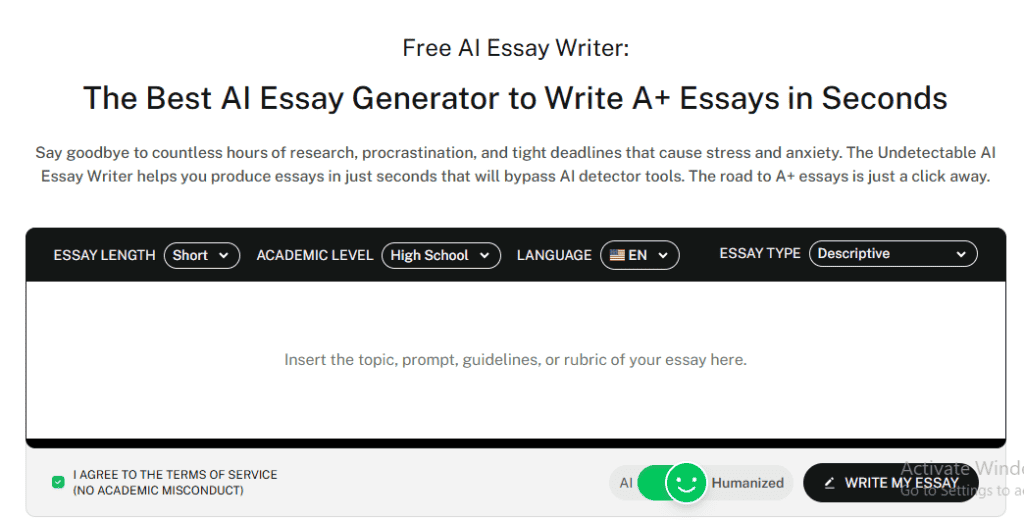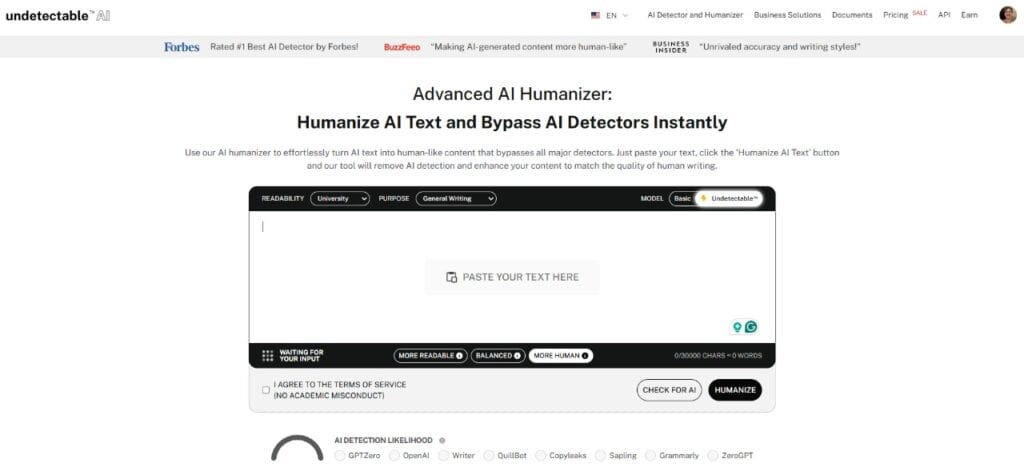Have you ever gotten into an argument and, halfway through, your spouse or partner said, “I love you, but…”
That “but” is the start of your emotional bankruptcy. We all know what’s next, and it isn’t pleasant. Instead, you’ll get a 30-minute PowerPoint presentation on why “it’s me, not you.”
That’s how you effectively use coordinating conjunctions.
Those little grammar monsters (but, or, for, so, nor, yet) often cause more chaos than any other words in the English dictionary.
While their main purpose is to link ideas, choosing the wrong one can mean not making much sense.
Let’s break these words down and look at ways to use them properly in your writing.
Key Takeaways
- Coordinating conjunctions connect words, phrases, or clauses of equal importance. Remember them with the acronym FANBOYS (for, and, nor, but, or, yet, so).
- They have specific comma rules: use commas before coordinating conjunctions when joining independent clauses.
- Unlike subordinating conjunctions, they don’t create dependency between sentence parts.
- Common mistakes include comma splices and missing punctuation that can confuse readers.
- Practicing with real examples helps you master their natural usage in both formal and casual writing.
What Are Conjunctions in General?
Conjunctions are connector words.
They’re like bridges that link different parts of your sentences together. Without them, we’d be stuck writing like cavemen: “Me hungry. Me want food. Food good.”
There are three main types of conjunctions, but we’re focusing on coordinating conjunctions today.


Never Worry About AI Detecting Your Texts Again. Undetectable AI Can Help You:
- Make your AI assisted writing appear human-like.
- Bypass all major AI detection tools with just one click.
- Use AI safely and confidently in school and work.
Think of them as the democratic type. They don’t play favorites. When a coordinating conjunction joins two things, both sides get equal treatment.
Regular conjunctions do the bulk of the work in sentences. They connect words (“cats and dogs”), phrases (“in the morning or at night”), and even whole clauses (“I studied hard, but the test was brutal”).
They’re workhorses that keep your writing from sounding choppy.
The beauty of conjunctions lies in their simplicity. Most are tiny words, but they pack a serious punch.
They can completely change the meaning or flow of a sentence with just two or three letters.
Difference Between Subordinating and Correlative Conjunctions
Coordinating conjunctions are the chill siblings in the conjunction family. Subordinating conjunctions are the bossy ones that create hierarchy (“because,” “although,” “since”).
Correlative conjunctions are the twins that always come in pairs (“either…or,” “both…and”).
Here’s where it gets interesting. Coordinating conjunctions treat both sides equally. “I like coffee and tea” gives equal weight to both beverages.
But “I like coffee because it’s energizing” makes the coffee the star and the energy boost just supporting information.
Subordinating conjunctions create dependent relationships. One part of the sentence can’t survive without the other. “Although it was raining” leaves you hanging. You need more information.
But “It was raining, and I got soaked” works perfectly. Both parts could stand alone as complete sentences.
This equality thing is crucial for coordinating conjunctions. They’re diplomats.
They don’t pick sides or create drama between sentence parts. They just make nice connections and let both sides shine.
Want to check if you’re using coordinating conjunctions properly?
Tools like Undetectable AI’s Ask AI can analyze your sentences and explain whether your conjunction usage follows grammar rules correctly.
The FANBOYS Acronym

FANBOYS is a handy way to remember coordinating conjunctions.
Each letter represents one of the seven coordinating conjunctions: For, And, Nor, But, Or, Yet, So.
- For shows reason or cause. “I brought an umbrella, for it looked like rain.” It’s formal and sounds a bit old-school, but it works.
- And is the friendliest conjunction. It adds information or connects similar ideas. “She plays guitar and sings beautifully.” Everyone knows this one.
- Nor is the negative cousin of “or.” It continues a negative thought. “He doesn’t eat meat, nor does he drink milk.” Sounds fancy, right?
- But shows contrast or opposition. “The movie was long but entertaining.” It’s the conjunction equivalent of “however.”
- Or presents alternatives or choices. “Do you want pizza or pasta?” Simple and straightforward.
- Yet is like “but” with attitude. It shows unexpected contrast. “She’s young, yet she’s incredibly wise.” It adds emphasis to the surprise.
- So indicates result or consequence. “I was tired, so I went to bed early.” It’s casual and conversational.
These seven words handle most connection jobs in English.
They’re versatile and powerful despite being small. Learning them opens up tons of possibilities for smoother writing.
Rules for Using Coordinating Conjunctions
The comma rule is the big one that many people mess up.
Unlike when using a semicolon, you need a comma before the coordinating conjunction when you’re connecting two complete sentences (independent clauses).
“I wanted to go to the party, but I had too much homework.”
Here’s the test: if you can split the sentence at the conjunction and both parts make sense alone, use a comma.
“I wanted to go to the party” works.
“I had too much homework” works.
Comma needed.
But when you’re just connecting words or phrases, skip the comma. “I like apples and oranges” doesn’t need punctuation. “She ran quickly and quietly” flows fine without commas.
The serial comma (Oxford comma) gets tricky with lists. “I bought apples, oranges, and bananas” includes a comma before “and.”
Some style guides require it, others don’t. Pick a style and stick with it.
Don’t start sentences with coordinating conjunctions in formal writing.
“And then we went home” sounds casual. “But I disagree with that point” works in conversation but not in academic papers. Save it for informal contexts.
Comma splices are the enemy. “I was hungry, I ate a sandwich” is wrong. You need a coordinating conjunction (“I was hungry, so I ate a sandwich”) or different punctuation.

Grammar checkers like Undetectable AI’s Grammar Checker can catch these comma splice errors and punctuation issues with coordinating conjunctions before they trip you up.
Examples of Coordinating Conjunctions in Sentences
Let’s see these little troublemakers in action.
Below are real sentence examples where coordinating conjunctions do what they do best: connect, contrast, and occasionally stir the pot.
With Nouns, Verbs, and Adjectives
Nouns love coordinating conjunctions.
“Dogs and cats make great pets.”
“Choose between chocolate or vanilla.”
“She likes neither spinach nor broccoli.”
These connections feel natural because they link similar things.
Verbs get the same treatment.
“He runs and swims every morning.”
“You can walk or drive to the store.”
“She doesn’t smoke or drink alcohol.”
The parallel structure makes sentences flow smoothly.
Adjectives pair up beautifully too.
“The movie was long but engaging.”
“Her dress is elegant yet comfortable.”
“The weather is hot and humid today.”
These combinations add depth to descriptions.
Compound subjects and predicates always use coordinating conjunctions.
“Tom and Jerry are cartoon characters” (compound subject).
“I washed the dishes and cleaned the kitchen” (compound predicate).
They’re everywhere once you start noticing.
Between Independent Clauses
This is where coordinating conjunctions really shine.
They connect complete thoughts while maintaining balance.
- I studied all night, yet I still felt unprepared for the exam.
Each side works on its own. The conjunction builds the relationship.
- The concert was expensive, but the experience was worth every penny.
Shows contrast between cost and value.
- We can order pizza, or we can cook dinner at home.
Presents two equally valid options.
Use a comma before the conjunction when joining two independent clauses.
It signals you’re connecting full thoughts, not just adding a word or phrase.
In questions and informal language
Questions use coordinating conjunctions to offer choices:
- Are you coming with us, or are you staying home?
- Do you want coffee, tea, or juice?
These build out options in question form.
Informal writing breaks some rules on purpose:
- And you know what happened next?
- But seriously, what do you think?
Text messages and casual speech often begin with conjunctions:
- So I was thinking…
- But wait, there’s more!
These feel natural in conversation, even if technically incorrect in formal writing. Match your usage to your audience.
Academic and business settings are stricter, while personal messages are more forgiving.

If your sentences sound too choppy or repetitive with conjunctions, try Undetectable AI’s AI Essay Rewriter to restructure them more effectively while maintaining natural flow.
Coordinating vs Subordinating Conjunctions
The key difference comes down to power dynamics.
Main difference: equality vs dependence
Coordinating conjunctions create equal partnerships between ideas.
Subordinating conjunctions, on the other hand, build dependent relationships, like a boss and an employee.
- “I was tired, and I went to bed early.” → Both ideas hold equal weight.
- “I went to bed early because I was tired.” → One idea supports the other.
This changes the tone. Coordinating conjunctions sound balanced, while subordinating ones add structure, focus, or explanation.
Example comparisons: “and” vs “because,” “but” vs “although”
- “I studied hard, and I passed the test.” → Equal importance.
- “I passed the test because I studied hard.” → Focus on the cause.
- “The weather was terrible, but we had fun anyway.” → Contrast with balance.
- “Although the weather was terrible, we had fun.” → Focus stays on the fun.
Choose based on what you want to emphasize. Equal importance?
For help keeping your tone consistent while experimenting with structure, try the Writing Style Replicator.
Go coordinating. Want to highlight cause, effect, or contrast? Try subordinating.
Common Mistakes and How to Fix Them
The comma splice is public enemy number one. “I love pizza, I eat it every day” connects two sentences with just a comma.
That’s illegal in grammar court.
Fix it three ways: add a coordinating conjunction (“I love pizza, and I eat it every day”), use a semicolon (“I love pizza; I eat it every day”), or split into separate sentences (“I love pizza. I eat it every day”).
- Missing commas with independent clauses cause confusion. “I wanted to call you, but my phone died” runs together awkwardly. The comma before “but” creates a pause that helps readers process the contrast.
- Run-on sentences happen when people get comma-happy. “I went to the store, and I bought milk, and I forgot my wallet, and I had to go back home, and then I returned to pay.” Too many “ands” create a rambling mess.
- Starting formal sentences with coordinating conjunctions sounds too casual. “And furthermore, I believe…” should be “Furthermore, I believe…” in academic writing.
- Overusing certain conjunctions makes writing repetitive. “I like cats and dogs and birds and fish and hamsters” needs less repetition. Try “I like cats, dogs, birds, fish, and hamsters” or restructure completely.
- Fragment sentences sneak in with subordinating conjunctions disguised as coordinating ones. “Because I was tired” isn’t complete. Don’t confuse it with coordinating conjunction rules.

Undetectable AI’s AI Humanizer can help polish repetitive sentence structures that rely too heavily on simple conjunctions like “and” or “but,” making your writing sound more natural and varied.
Practice Exercises
Exercise 1: Identify the Coordinating Conjunctions: Find the coordinating conjunctions in these sentences:
- “She wanted coffee but ordered tea instead.”
- “You can drive or take the bus to work.”
- “He studied hard, yet he failed the exam.”
Exercise 2: Add Proper Punctuation: Insert commas where needed.
- “I love reading and I spend hours in bookstores.”
- “The movie was long but it was entertaining.”
- “We can eat pizza or we can cook dinner.”
Exercise 3: Fix the Comma Splices: Correct these sentences.
- “I was hungry, I made a sandwich.”
- “She’s talented, she practices every day.”
- “The weather is nice, let’s go outside.”
Exercise 4: Choose the Right Conjunction: Fill in the blanks with appropriate coordinating conjunctions.
- “I wanted to go, _____ I was too tired.”
- “Do you prefer chocolate _____ vanilla?”
- “He doesn’t like vegetables, _____ does he eat fruit.”
Exercise 5: Combine Sentences: Use coordinating conjunctions to combine these sentence pairs.
- “The test was difficult. I passed it.”
- “We can watch a movie. We can play games.”
- “She’s smart. She’s also funny.”
Practice makes perfect with grammar rules.
Start with simple examples and work up to complex sentences. Pay attention to comma placement and clause independence.

For real-time help with practice exercises and feedback on your examples, try Undetectable AI’s AI Chat to revise and test your coordinating conjunction usage.
Stay ahead of detection systems—verify and humanize your text with our tools below.
Conjunctions: Small Words, Big Problems
Coordinating conjunctions are everywhere in good writing. They’re the quiet connectors that help ideas flow and sentences make sense.
The FANBOYS acronym gives you seven powerful tools, each with its own job. And adds, but contrasts, or offers options. Once you know their strengths, using them feels natural.
These words link equal parts of a sentence, keeping your writing balanced and easy to follow. Just don’t forget the commas. When both sides are full sentences, you need one.
Grammar works best when you apply it to your own writing. Start noticing conjunctions in everyday reading and try rewriting a few sentences yourself.
If things start feeling repetitive or clunky, Undetectable AI has tools to help clean up overused patterns and polish your flow.
Use grammar to serve your ideas, not the other way around.
